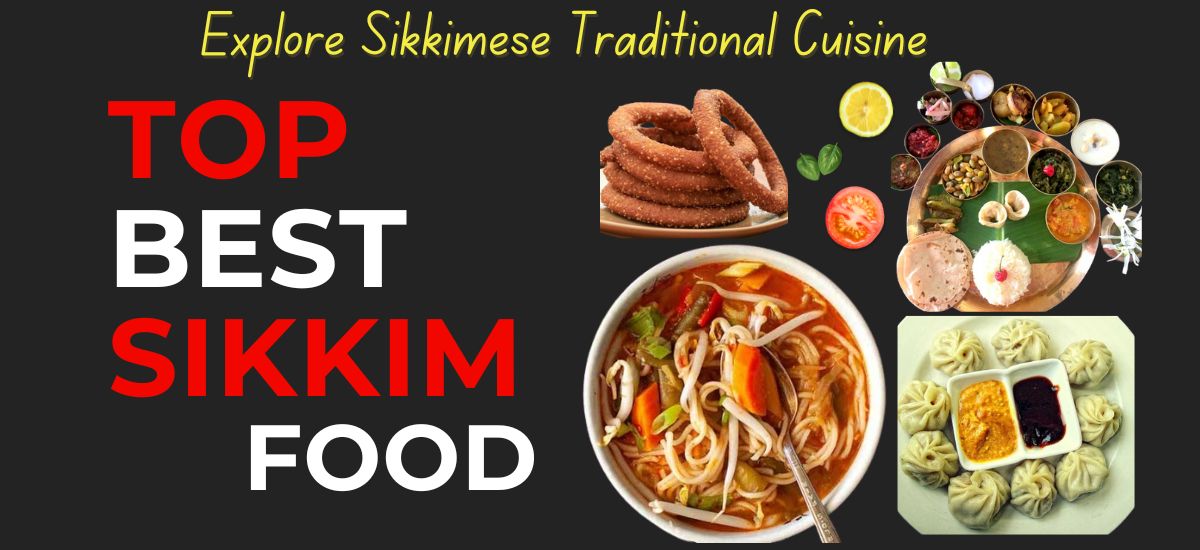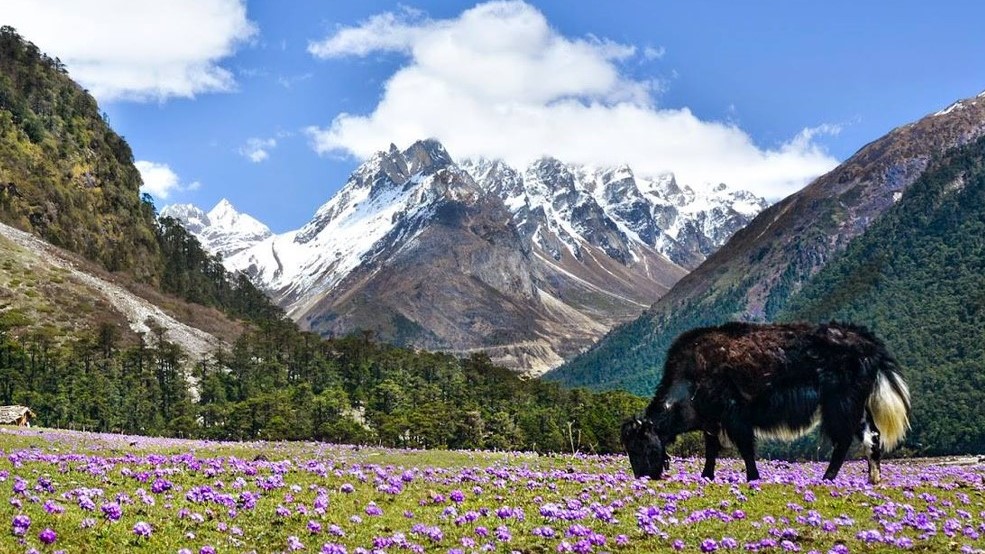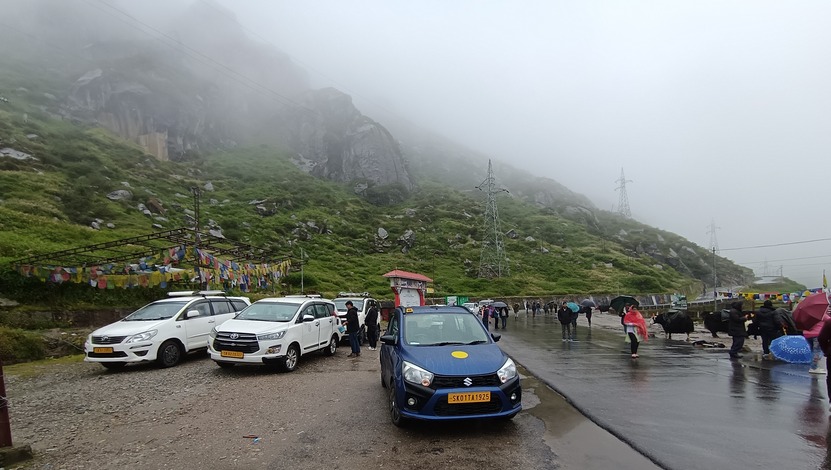Explore Sikkimese Best Food and Traditional Cuisine sikkim
Explore Sikkimese Best Food and Traditional Cuisine in sikkim
Introduction sikkim foods
Sikkim, nestled in the majestic Himalayas, is a hidden gem for sikkimese foods enthusiasts. The cuisine of Sikkim is a delightful blend of Tibetan, Nepalese, and Indian flavors, resulting in a diverse and delectable culinary experience. From hearty traditional meals to tantalizing sikkim street food offers an array of gastronomic delights that are sure to leave a lasting impression on your taste buds.
Traditional Sikkimese Cuisine
Sikkimese cuisine is characterized by its simplicity and use of locally sourced ingredients. Staple foods such as rice, maize, and pulses form the foundation of many traditional dishes. One cannot miss the iconic momos, which are dumplings filled with meat or vegetables, and served with a spicy dipping sauce. Thukpa, a hearty noodle soup, is another must-try dish that is both comforting and flavorful. Additionally, Phagshapa, a pork dish cooked with radishes and dried chilies, showcases the rich flavors of Sikkimese cuisine.
-
Momos: These are steamed or fried dumplings filled with meat or vegetables. They're a Sikkimese staple and come with various dipping sauces.
-
Thukpa: A noodle soup prepared with vegetables or meat, seasoned with different spices. It's hearty and perfect for colder weather.
-
Gundruk: Fermented leafy greens, often used in soups or stir-fries. It has a unique tangy flavor and is a popular ingredient in Sikkimese dishes.
-
Sha Phaley: Fried bread stuffed with seasoned meat or vegetables. It's a delicious snack or part of a meal.
-
Chhurpi: This is a traditional cheese made from yak's milk. It's often chewed as a snack or used in cooking.
-
Sel Roti: A traditional Sikkimese rice-based donut, usually consumed as a snack or during festivals.
-
Sinki: Another fermented dish made with radish taproots. It's sour and often added to soups or stir-fries for a distinctive taste.
Flavors of the Street foods in Sikkim
Exploring the local street food scene in Sikkim is an adventure in itself. From piping hot samosas to crispy pakoras, the street vendors offer an array of snacks to satisfy your cravings. For those with a sweet tooth, the popular Sel Roti, a traditional rice doughnut, is a delightful treat that pairs perfectly with a cup of chai. The street food culture in Sikkim is a vibrant tapestry of flavors that reflects the region's diverse culinary influences.
sikkim Organic Foods: Farm-to-Table Experience
Sikkim is renowned for its emphasis on organic farming, and this commitment to sustainability is reflected in its culinary offerings. The farm-to-table experience in Sikkim allows visitors to savor the freshness of locally grown produce. From crisp, garden-fresh vegetables to succulent fruits, every meal in Sikkim is a celebration of organic flavors that are both wholesome and delicious.
sikkim foods with Modern Takes on Traditional Flavors
In recent years, Sikkim has witnessed a culinary evolution with the emergence of eateries that offer a modern twist to traditional dishes. Restaurants and cafes in Sikkim creatively fuse local ingredients with global culinary techniques, resulting in innovative dishes that cater to diverse palates. Whether it's a contemporary take on the classic momos or a fusion dessert featuring indigenous fruits, Sikkim's fusion fare is an exciting journey for adventurous food lovers.
Frequently Asked Questions about Sikkimese Food and Traditional Cuisine
1. What are some popular dishes in Sikkimese cuisine?
Sikkimese cuisine boasts several delicious dishes such as Momos (dumplings), Thukpa (noodle soup), Gundruk (fermented leafy greens), Phagshapa (pork cooked with radishes and spices), Sha Phaley (fried stuffed bread), among others.
2. Are there any must-try snacks or street foods in Sikkim?
Yes, Sikkim offers delightful snacks like Sel Roti (rice-based donut), Chhurpi (yak's milk cheese), and Sha Phaley (fried bread stuffed with meat or veggies) that are worth trying from street vendors.
3. What makes Sikkimese cuisine unique?
Sikkimese cuisine is a blend of Tibetan, Nepalese, and Indian flavors, resulting in a diverse array of dishes. Ingredients like fermented products (Gundruk and Sinki) and yak-based items contribute to its uniqueness.
4. Can vegetarians find options in Sikkimese cuisine?
Absolutely! Many Sikkimese dishes offer vegetarian versions, especially Momos and Thukpa, which can be filled with a variety of vegetables.
5. Where can I experience authentic Sikkimese cuisine?
Local eateries, traditional restaurants, and street food stalls across Sikkim, especially in places like Gangtok, offer authentic Sikkimese dishes. Additionally, festivals often showcase the best of local cuisine.
6. What beverage complements Sikkimese food?
Butter tea or "Suja" is a traditional Tibetan drink popular in Sikkim. It's made with tea leaves, butter, and salt, offering a unique taste that complements the flavors of Sikkimese dishes.
7. Are there any specific dietary customs or etiquettes to follow while dining in Sikkimese culture?
While there aren't stringent rules, it's respectful to eat with your right hand and remove your shoes while entering someone's home. Additionally, finishing the food on your plate is considered polite.
8. Are these traditional dishes available throughout the year?
Yes, most of these dishes are available year-round, especially in local eateries and restaurants catering to traditional cuisine. However, some dishes might be more prevalent during specific festivals or seasons.
Conclusion
Sikkim's culinary landscape is a testament to the region's rich cultural heritage and diverse influences. From soul-warming traditional meals to inventive modern creations, the food in Sikkim is a celebration of flavors, traditions, and innovation. Whether you are a dedicated foodie or an adventurous traveler, Sikkim's gastronomic delights are sure to leave a lasting impression, making it a destination that beckons the discerning palate.













.jpg)